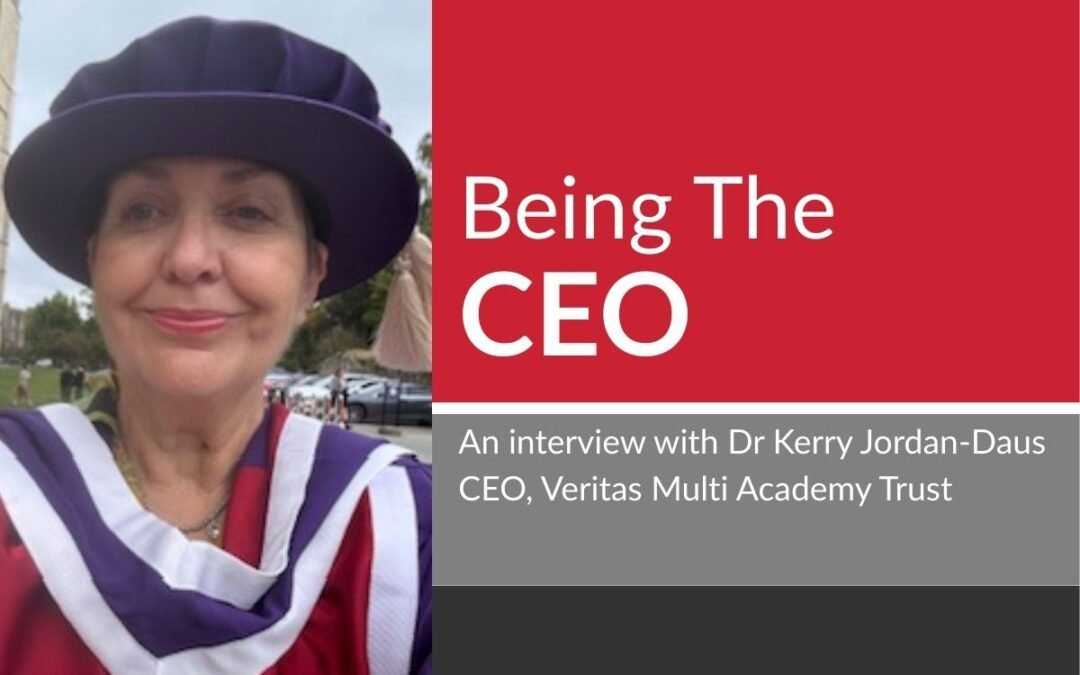 Frank Norris MBE is Chair of our National Education Leaders Network and former CEO of the Coop Academies Trust and a former HMI. In this article, Frank picks up on some of the key themes from September’s annual National #TrustLeaders CEO Conference around community participation and pure accountability, and reflects on why staying focused on these key areas matters more than ever.
Frank Norris MBE is Chair of our National Education Leaders Network and former CEO of the Coop Academies Trust and a former HMI. In this article, Frank picks up on some of the key themes from September’s annual National #TrustLeaders CEO Conference around community participation and pure accountability, and reflects on why staying focused on these key areas matters more than ever.
Those of us with rather longer careers than we would want to be reminded of will remember the contribution to education made by Professor John Tomlinson. The Guardian obituary in August 2005 described him as ‘a prophet’ principally for his ability to anticipate and pioneer significant educational ideas. These included residential centres, comprehensive schools, inter-professional collaboration in the interests of the whole child, self-reflective schools and inclusive education. At a time when most of society’s ills were being laid at the door of teachers, he nourished their self-respect and dedication.
Tomlinson was Director of Education in Cheshire for 13 years and then Professor of Education at Warwick University and then Director of the Institute of Education where he encouraged school-industry links and prepared for the introduction of more government-controlled teacher training provision.
A less well-known achievement of John Tomlinson was the creation of the School Curriculum Award. This was a national award open to all schools who wanted to develop a sense of them being at the heart of their community and to be acknowledged for this approach.
To qualify for the award, schools needed to show evidence to an independent assessor that they had fully met the following criteria:
- The school’s involvement with its community is expressed in a broad and balanced curriculum and in the ethos, development and planning to which the school as a whole is committed.
- The school’s involvement with its community enhances the quality of teaching, learning, attainment and progress.
- The interaction between the school and its community is two-way, with each influencing and contributing to the other. Interaction is characterised by high quality relationships and mutual respect, both within the school and between the school and community. The horizons of both will be widened and greater mutual understanding generated.
During the 20 years of its existence the Award was granted to over 1700 schools and as the Princess Royal pointed out at the Awards Ceremony in April 1997, it is a means of bringing successful practice in the community to light and of providing examples ‘for all to see and others to follow’.
“At a time when most of society’s ills were being laid at the door of teachers, he {Tomlinson} nourished their self-respect and dedication.”
Much has changed in society since the Award was disbanded in 2002, but the underpinning principles are probably more important now than at any other time in the recent past. The focus on the curriculum by Ofsted has raised the stakes and certainly the scrutiny of what the curriculum is meant to consider and how its impact is to be measured, but the Award pointed to an important starting point for schools and that is their sense of place and how teachers provide a deep understanding of why things are as they are in the place where the pupils live. The breadth of the evidence expected by assessors when they visited schools gives a sense of the scope and depth of the work that was required to achieve the award.
- integration
- community links
- parental involvement
- staff development
- inter-agency co-operation
- raising standards
- literacy and numeracy
- creation of neighbourhood resources
- improvement of the natural environment
- support for good causes
- new links with business and industry
- citizenship work
- learning opportunities for adults
- acknowledging the contribution of elderly people
- care for others
- primary/secondary liaison
- the growth of ICT
- personal and social education
- promotion of the arts
- international liaison
- combating disaffection and truancy.
Tomlinson was certainly a visionary with a clear sense that effective community engagement could play an important part in ensuring all pupils felt connected, seen and valued. The challenge for school and trust leaders is to acknowledge the importance of this work while pivoting towards it more fully at a time when there are many other education issues on the horizon. This was acknowledged by Michael Pain in his presentation at the Forum Strategy National CEO Conference in September 2025. He said ‘We have all the ingredients we need for health and prosperity – for fulfilling lives; what we are missing is the sense of togetherness, belonging and – for too many – the chance or confidence to participate in the unprecedented opportunities that exist’
Michael drew attention to the danger of communities that are either disengaged or feel disempowered, or both. The growing number of parental and carer complaints being managed by trusts and schools is a potential example of schools being seen as a service provider with the citizen as the customer. There is little doubt in my mind that the Department for Education has a strong desire to have as much control as possible, whether this is with the guidance it offers, the expectations it establishes through the accountability framework or the work of its non-ministerial organisations such as Ofqual, Ofsted and others. In its pursuit of control, it encourages school/trust leaders to respond by looking upwards. As Pain explains, what we need is ‘leadership that looks outwards, at least as much as it looks upwards’.
“What we need is leadership that looks outwards, at least as much as it looks upwards.”
It is odd but I feel that the current unsettling time with the Francis Review looming, uncertainty over SEND reform and the changes to inspection arrangements provide a good time to undertake a pivot to a more community-engaged and enabling approach. But what do I/we mean by ‘community?’ This is a more troubling starting point than at first it seems. Some view it in a rather insular and limited way. There are two approaches which I have heard recently, and they are conveyed along these lines.
‘I have a duty and responsibility for the pupils that choose to come here, and it is impossible to view their communities in a singular way because they come from across our city. That’s why we undertake limited community engagement.’
‘The reach and responsibilities of schools have extended way beyond what it used to be, and we have lost what our sole responsibility is, and that’s to teach the children.’
I understand where these points of view are coming from, but both reflect an inward-looking approach that fails to acknowledge the inter-relationship espoused by Tomlinson those many years ago. A school is located within a community and despite the proportion of pupils who live locally and who attend it I believe it has a deep-rooted responsibility to empower the local community voice and build partnerships and understanding beyond just those families who attend it.
“A school is located within a community… it has a deep-rooted responsibility to empower the local community voice and build partnerships and understanding beyond just those families who attend it.”
How this empowerment and partnership building are supported will largely depend on the type of school, its location, the skillset it possesses and a host of other issues. There is no central template for this engagement to work effectively. There needs to be a commitment and a willingness, however, to work closely with others. This would include other schools and trusts because we need to reduce the negative impact of competition between them so that the overall education provision can prosper under an umbrella of mutual respect. As the old saying goes ‘It takes a village to raise a child’.
I want to return to Michael Pain’s keynote to bring all this together because he provides some clear steps to help shift the dial towards more cooperation and collaboration for community benefit. Firstly, he identifies the need for ‘moral endeavour’ with trusts working together to ‘identify, need and aspiration’. Secondly, he stresses the need for ‘wider participation’ and a stronger role for Governing Bodies to reflect on their representation and how well connected they are to their communities. He next identifies the need for a ‘shared responsibility’ with a shift towards partnership and participation. Fourthly, comes the ‘sense of place’ with schools becoming places for bringing people together. He’s at pains to point out, wisely, that this doesn’t mean they have to lead. Fifthly, he considers the wisdom and connectivity of the Board that oversees such matters. He advocates a more co-operative model. And finally, he believes we need great storytellers who can communicate effectively how all these issues can excite, generate enthusiasm and commitment. As John Tomlinson said, “People hear the messenger as much as the message, and if they don’t know you or have reason to doubt your sincerity, whatever you say is going to land like a lead balloon”. I wonder whether this is also a possible indication why parent/carer complaints are on the rise?
“We need to reduce the negative impact of competition between schools and trusts so that the overall education provision can prosper under an umbrella of mutual respect. As the old saying goes, ‘It takes a village to raise a child.’”
The challenge for school and trust leaders is to engage in a meaningful way with others who share a similar approach and get things moving. I wrote an article for Schools Week a couple of years ago where I promoted a strong desire for government to grant greater control to local areas with new forms of local partnerships. My thinking was heavily influenced by Professor Mel Ainscow’s book ‘Promoting equity within education systems. Lessons from Great Britain’. Ainscow believes our system has untapped potential to improve itself through networking and collaboration. It is unfortunate that changes in the accountability framework and Ofsted’s new inspection framework do not place a stronger emphasis on these aspects.
All is not lost, however, because recently some local authorities and forward-thinking schools and trusts have appointed ‘independent chairs’ to oversee cross-school and community-based developments. These leaders help to sustain focus on, and commitment to, locally agreed priorities. The independent nature of the role has enabled them to identify areas requiring improvement and those best placed to support, and to advise and assist without fear or favour. These actions make clear there is so much more that can be done when an agreed approach is reached. There are some already getting on with things and as Ainscow makes clear we need to bring these actions to the attention of others.
With a number of significant education reforms emerging on the horizon, now is the time to reflect on the communities we work with and how we want that relationship to shift in the future. School and trust leaders can look upwards for direction but as we know this doesn’t always work well for our communities. The challenges we are facing are significant but together we can be stronger, more impactful and we can face the weather with a united front.
May I let you into a secret? The school I led in 2000 was awarded the School Curriculum Award and it remains one of the most important and influential events in my extensive career.
Some reflective questions
- What is your understanding of who makes up your trust’s and its schools’ community? How broad and ‘outward facing’ is this understanding?
- What does your trust need to do to strengthen a sense of cooperation, collaboration and clarity of respective responsibilities with others in the local area – not least parents and carers?
- How effective is your trust at storytelling – so essential to ‘bringing people with us’ – and how do you know?


